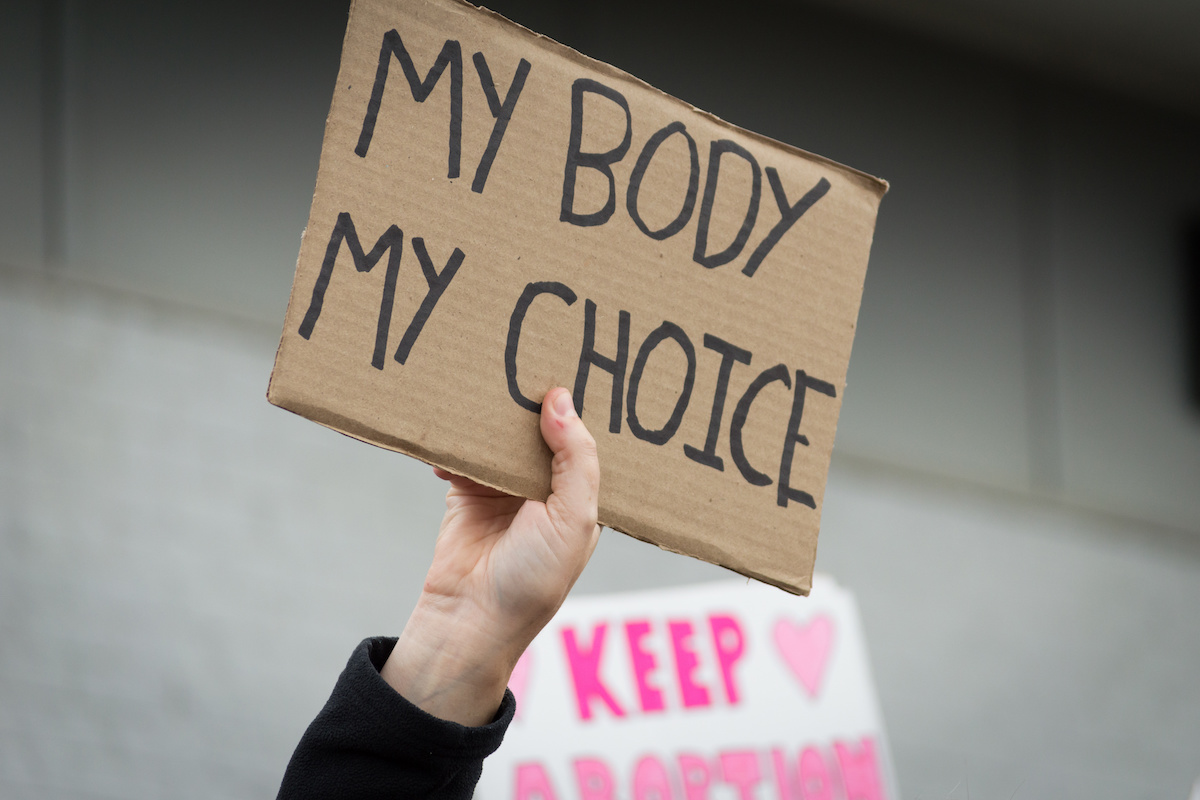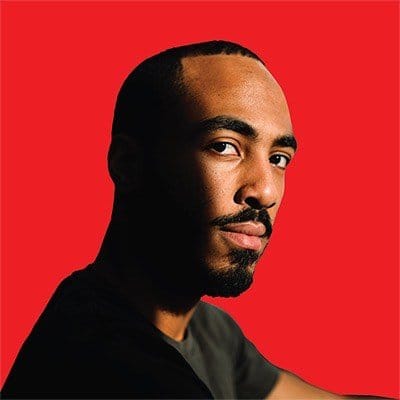
Last Tuesday, the Governor of Alabama signed the most restrictive anti-abortion bill in America into law. The new law bans abortions even in the case of rape and makes performing an abortion a Class A felony, punishable by up to 99 years in prison. Despite the low probability of this law going into effect, it has provoked a slew of commentary from both sides of the aisle. To call it “commentary,” however, suggests that people are engaging in thoughtful attempts to persuade one another. In reality, the abortion debate has had all the intellectual rigor and emotional maturity of a pissing contest.
In an effort to be part of the solution, I’d like to explain why I’m pro-choice. Without doubt, my position will put me at odds with pro-lifers. But it will also put me at odds with many pro-choicers. Indeed, part of the reason I feel motivated to defend my position is because of how unpersuasive I find the central argument of the pro-choice movement. It’s painful to watch a movement use bad reasons to defend a position when good ones are available.
The bad argument I’m referring to—often sloganized as “my body, my choice,” or its corollary, “they want to control women’s bodies”—can be summarized as follows:
- It’s a woman’s right to choose what to do with her body.
- A fetus is part of a woman’s body.
- Therefore, it’s a woman’s right to choose what to do with her fetus.

The first premise makes sense. A person should be free to do as they wish with their own body. If someone wants to pierce their ears or donate a kidney, it’s their right to do so, because those are their body parts. No one else’s moral concerns need to be traded off against theirs. The second premise, however, is false because a fetus is not merely a body part. Given enough time, a fetus will become something with distinct moral worth: a baby. The same cannot be said about a kidney.
When someone gets an ear pierced, they don’t stop to consider the event from their ear’s perspective. After all, their ear is a part of them—which is to say its ethical concerns align with its owner’s by definition. If a fetus were really akin to a body part, there would be no reason not to abort it the moment before delivery, on a whim—like an impulsive ear piercing. Given the widespread repugnance of that conclusion, and given that there are far better pro-choice arguments available, the “my body, my choice” argument should be retired permanently.
On the other side of the debate lies an equally bad argument, namely that life or personhood begins at conception because science says so. To the contrary, there exists no consensus among biologists about what, specifically, divides life from non-life. Moreover, science doesn’t even try to tell us when personhood begins because none of the ethically important dimensions of being a person—for example, conscious experience, the ability to feel pain, the capacity for self-sustaining growth, and so on—flips on like a light switch at any moment along the path, including the moment of conception. Most, if not all, of the capacities relevant to personhood emerge gradually on a spectrum of development, just as one color bleeds into the next on a color gradient.
Put differently, “When does life/personhood begin?” is not a scientific question, but a conceptual one. To use an analogy, consider the age of sexual consent (which in some U.S. states is 18 years old.) Science can discover many important facts, such as the age at which humans reach sexual maturity (earlier than 18), or the age at which the prefrontal cortex fully develops (later than 18). But science alone cannot tell us when a “child” becomes an “adult.” Biological facts may be relevant to that question, but it can’t be answered by biology alone. In the end, most Western democracies draw the line somewhere between 16 and 18 years-old—not because science says so, and not because some moment of instantaneous transformation happens during this period of adolescence, but because it seems reasonable based on all of the ethically relevant factors.
The line dividing a “cluster of cells” from a “person” is similar in this respect. Science can discover many important facts, such as the point at which a fetus can feel pain, or the point at which it can survive outside the womb. But science cannot tell us when a “cluster of cells” becomes what we understand to be a “person.” It’s up to us to answer that question.
A critic might reject this analogy. Perhaps we can draw an arbitrary line between childhood and adulthood because the stakes aren’t high, they might say. But how can we create an arbitrary line dividing human life from something less? This critique fails for two reasons. First, it’s not as if the stakes for “adulthood” are low. Somewhere in America, somebody is rotting in jail—and will be on a sex offender registry for the rest of their life—because they had sex with someone a day too soon. Those stakes aren’t quite life-and-death, but they are extremely serious. And despite the gravity of those stakes, we still rely on a somewhat arbitrary judgment because we lack a decisive alternative.

Second, there are no objective lines on offer to begin with. Although drawing bright lines at conception and birth may offer the appearance of clarity (to pro-lifers and pro-choicers respectively), ethically speaking, both moments are arbitrary. The moment the egg is fertilized, forming a zygote with unique DNA, may be significant from a biologist’s perspective, but in terms of its capacity to suffer and flourish, a zygote differs only trivially from the pair of cells that formed it.
The same is true for birth: it is clearly a landmark moment in one sense, which is why we celebrate it every year. But in terms of its capacity to suffer and flourish, a fetus the day before delivery is no different from a newborn baby. “Personhood” emerges gradually, second-by-second and cell-by-cell over the course of weeks and months. Nature has failed to satisfy our demand for crisp boundaries and conceptual certainty. Our challenge with abortion, much like our challenge with the age of consent, is to create a boundary line that represents a reasonable compromise between competing values and interests.
Among the ethical considerations that favor the pro-choice side is the fact that many women considering an abortion are not choosing between having a child and not having a child, but between having a child now and having a child later when they anticipate being in a better position to provide for a child. The difference matters. The first scenario pits a world with N people against a world with N+1 people. But the second scenario pits a world with N+1 people against a slightly better world, also with N+1 people—a world in which a mother is better able to provide for her child. (How many abortions fall into the second category? I don’t know exactly, but probably less than half. Still, viewing the ethics of abortion exclusively through the lens of the first scenario makes the pro-life case seem stronger than it actually is.)
Even in the first scenario, however, there are considerations that favor the pro-choice side. Most women who get abortions already have kids and many are considering an abortion because they’re struggling to provide for the children they already have. 49 percent of people who got abortions in 2014 were below the poverty line. In a low socioeconomic context, carrying a fetus to term could mean reducing the resources devoted—and the quality of life given—to each child. While the welfare state can mitigate this somewhat by providing benefits that scale with the number of children a family has, there is no replacing the parental time and attention that existing children lose upon the arrival of a new child.
And then there’s the specter of illegal abortions, which have been ubiquitous throughout history and throughout the world. Before Roe vs. Wade legalized abortions nationwide, there was a substantial black market for illegal abortions, which were generally performed in suboptimal conditions. Today, the World Health Organization estimates that unsafe abortions result in about 7 million hospital admissions per year throughout the developing world. Given that the demand for abortions seems to remain high whether abortions are administered legally in clinics or illegally in hotel rooms, many women would likely suffer health complications from illegal abortions as a consequence of signing pro-life principles into law.
All told, there are substantial ethical costs associated with the pro-life position. Of course, there are substantial ethical costs associated with the pro-choice position as well, chief among which is the prevention of flourishing that would otherwise have occurred had an aborted fetus been brought to term. Regardless of whether one believes a fetus to be a person with the full suite of associated rights, if left unmolested, a fetus is very likely to develop conscious experiences every bit as rich, compelling, and important as your own. Ending the prospect of that consciousness before it begins comes at a huge ethical cost.
The fallacy many pro-lifers commit, however, is to ascribe infinite value to that cost, such that it cannot be weighed against any number of concerns on the other side. Most actions have both ethical costs and ethical benefits. When both sides of the scale are substantial enough, it makes sense to weigh them before reaching a decision that reflects a reasonable compromise.
We do this all the time, even when the stakes are sky high. For example, we could lower the speed limit on every road in America to 10 miles per hour and save the 40,000 or so lives we lose each year to car accidents. But we don’t, because doing so would impose costs that probably outweigh 40,000 lost human lives. Suppose that somebody who favored lowering the speed limit made the following argument: a driver’s safety (or a driver’s “right to life/bodily autonomy”) is sacred and therefore cannot be traded off against any competing ethical concern. Not only will such a person fail to be persuaded by a list of ethical costs associated with slowing all traffic to a crawl, but they will also refuse to engage with opponents’ arguments. After all, their ethical imperative is so compelling that it’s impervious to consequentialist objections.
That is how both sides of the abortion debate are behaving at the moment. It’s a cop-out to dub some principle sacred—whether it’s a fetus’s right to life or a woman’s bodily autonomy—and then use the sanctification of that principle to ignore all of the ethical costs that position entails.
As for the inevitable question: where would I draw the line? Germany, Denmark, Finland, and Russia draw it at 12 weeks. That seems sensible because it gives women seeking abortions a reasonable amount of time to obtain them without encroaching on the period during which the fetus begins to develop consciousness (around week 20.) Although I’m partial to a line at 12 weeks, I’m persuadable in either direction, so long as those who seek to persuade me are willing and able to acknowledge the ethical complexity of the debate. Any line we draw will seem arbitrary because it is—and that’s okay. Arbitrary doesn’t mean random and it doesn’t mean cruel. It means that we are doing what civil societies have had to do since time immemorial: accept a difficult trade-off where natural constraints preclude the possibility of an easy solution.






